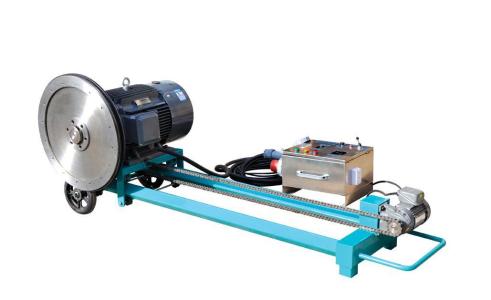
1. potential
Various kinds of damage will occur in the use of machinery. Damage will cause the structural parameters of parts to change. When the damage develops beyond the allowable value of the parameters of parts, the potential failure will occur. Because of the margin safety factor in mechanical design, even if the structural parameters of some parts exceed the allowable value, the function output parameters of the machine are still within the allowable range. Generally, it takes a long time to develop from potential fault to functional fault. During this period, the development of damage can be eliminated or slowed down by means of lubrication, cleaning, tightening and adjustment, and the potential faults can be controlled or even eliminated to a certain extent. The potential of mechanical failure can be maintained to reduce the occurrence of functional failure, thereby greatly extending the life of the machine.
2. gradually
With the passage of time, wear, corrosion, fatigue, aging and other consumption are shown, so the occurrence of mechanical failure is mostly related to the use of time. In use, mechanical damage is gradually generated, and the structural parameters of components are also slowly changing. Most of the faults can be tested and monitored by instruments beforehand. The probability of faults is related to the running time of the machine. The longer the machine is used, the greater the probability of faults. The gradual occurrence of faults makes most mechanical faults can be prevented. Fault diagnosis and condition-based maintenance are based on this.
3. attrition
With the gradual aggravation of mechanical aging, wear, corrosion, fatigue, aging and other failures are increasing. With the increase of service time, the removal of local faults can restore the mechanical performance, but the mechanical failure rate is still rising, new faults will continue to appear. The repair rate of wear and tear is also incomplete, and it is impossible to restore the mechanical performance to its pre-service state.
4. uncertainty
In the use of machinery, the damage and the change of output parameters are random and dispersive due to the influence of the use method and the surrounding environment. Due to the influence of material and manufacturing technology, the practical limit value and initial value of machinery are also different. In the same machine, the output parameters show different effects over time under different operating conditions, which leads to the uncertainty of parameter changes and fault criteria. The uncertainty of mechanical faults makes it difficult to diagnose and distinguish mechanical faults. It also requires that the study of mechanical faults must be combined macroscopically with microscopically.
5. diversity
In the use of machinery, the same parts often have a variety of failure mechanisms, such as bending deformation, wear, fatigue fracture and so on. These faults not only have different manifestations, but also have different levels of impact on the machine, so that the fault presents diversity. The diversity of mechanical failure requires that the failure be studied separately according to different mechanisms and modes.
Kanghua fifth generation Power-saving Master series mine wire saw machine
Hard Rock Cutting CNC Automatic Diamond Wire Saw Machine 55kw
Shock! The first Chinese 3D printing wire saw machine was born in Kanghua
Kanghua Wire Saw Machine in Moscow Stone Fair
Hot Sale Wire Saw Stone Quarry Cutting Machine
High Quality Wire Saw Cutting Machine for Quarrying
Diamond Wire Saw Mining Stone Cutting Machine
Granite Diamond Wire Saw Machine for Quarry Stone
Diamond Wire Cutting Rope Saw Machine
Granite and Marble Block Wire Saw Cutter Machine
Hard Rock Cutting CNC Automatic Diamond Wire Saw Machine 55kw
Shock! The first Chinese 3D printing wire saw machine was born in Kanghua
Kanghua Wire Saw Machine in Moscow Stone Fair
Hot Sale Wire Saw Stone Quarry Cutting Machine
High Quality Wire Saw Cutting Machine for Quarrying
Diamond Wire Saw Mining Stone Cutting Machine
Granite Diamond Wire Saw Machine for Quarry Stone
Diamond Wire Cutting Rope Saw Machine
Granite and Marble Block Wire Saw Cutter Machine

